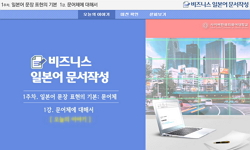There are various studies about the Korean orthography but studies about punctuation marks are still insufficient. However, the necessity of supplementing the current punctuation marks are being raised through several events such as "The discussion on...
http://chineseinput.net/에서 pinyin(병음)방식으로 중국어를 변환할 수 있습니다.
변환된 중국어를 복사하여 사용하시면 됩니다.
- 中文 을 입력하시려면 zhongwen을 입력하시고 space를누르시면됩니다.
- 北京 을 입력하시려면 beijing을 입력하시고 space를 누르시면 됩니다.
https://www.riss.kr/link?id=T11475001
- 저자
-
발행사항
부산 : 신라대학교, 2008
-
학위논문사항
학위논문(석사) -- 신라대학교 교육대학원 , 국어교육 전공 , 2008. 8
-
발행연도
2008
-
작성언어
한국어
-
주제어
국어교육 ; 문장부호 ; punctuation ; 구둣점
-
KDC
711.25 판사항(4)
-
발행국(도시)
부산
-
기타서명
A study on Korean punctuation
-
형태사항
114, 24 p. ; 26 cm
- 소장기관
-
0
상세조회 -
0
다운로드
부가정보
다국어 초록 (Multilingual Abstract)
There are various studies about the Korean orthography but studies about punctuation marks are still insufficient. However, the necessity of supplementing the current punctuation marks are being raised through several events such as "The discussion on detailed rules of punctuation marks" held by the National Institute of the Korean Language. In this study, I emphasized the importance of supplementing the current punctuation mark system and reorganized the detailed regulations in order to be helpful to the volume 'Punctuation Mark' in the future revised version of Korean orthography.
In the second chapter, I clarified the concept and the scope and examined the changes of the punctuation marks. The concept of punctuation mark varies according to the authors and the scope is slightly different as well. In this study, a punctuation mark is defined as 'Auxiliary measure to overcome the limitations of literary language based on colloquial language and help understand the contents of the sentence.' and excluded the marks on printing and general marks.
In chapter three, I pointed out the problems of the overall punctuation marks and of each item and proposed the improvement measures. The problems of overall punctuation marks are the problems regarding the position, system and names of punctuation marks, setting of punctuation marks for vertical writing, spacing words, overlapped punctuation marks and addition of the punctuation marks. In addition, I reviewed the current Korean orthography and the each regulation presented in the detailed proposition of punctuation mark prepared by the National Institute of the Korean Language in 2002. I also proposed details that can be adopted as our regulations by referring to 『The regulation of Chosun language (1987)』by North Korea and The Chicago Manual of Style(1993) and proposed proper 'Punctuation mark measures' suitable for the real-world communication.
The remaining task is to prepare for the punctuation mark regulations considering the unity with the punctuation marks of North Korea. Also, it is necessary to research about 'The punctuation marks used in the footnote' and 'The punctuation marks indicating the chapters and verses' that are not discussed in this study.
목차 (Table of Contents)
- 제1장 서론 1
- 제1절 연구의 목적 및 필요성 1
- 제2절 선행 연구 검토 2
- 제2장 문장 부호에 관한 이론적 고찰 8
- 제1절 문장 부호의 개념과 범위 8
- 제1장 서론 1
- 제1절 연구의 목적 및 필요성 1
- 제2절 선행 연구 검토 2
- 제2장 문장 부호에 관한 이론적 고찰 8
- 제1절 문장 부호의 개념과 범위 8
- 제2절 문장 부호 규정의 변천 11
- 1. 문장 부호 사용의 역사 11
- 2. 국어 문법서에 나타난 문장 부호 규정의 역사 14
- 제3장 한글 맞춤법과 세칙안의 문장 부호 검토 및 대안 제시 22
- 제1절 현행 문장 부호 규정의 문제점 22
- 제2절 한글 맞춤법과 세칙안의 문장 부호 세부 검토 및 대안 제시 28
- Ⅰ. 마침표[終止符] 29
- 1. 온점( . ), 고리점( ̥ ) 29
- 2. 물음표(?) 35
- 3. 느낌표(!) 41
- Ⅱ. 쉼표[休止符] 45
- 1. 반점( , ), 모점( 、) 45
- 2. 가운뎃점(․) 57
- 3. 쌍점( : ) 61
- 4. 빗금( / ) 64
- Ⅲ. 따옴표[引用符] 67
- 1. 큰따옴표( “ ” ), 겹낫표(『』) 67
- 2. 작은따옴표( ‘ ’ ), 낫표(「」) 71
- Ⅳ. 묶음표[括弧符] 74
- 1. 소괄호( ( ) ) 74
- 2. 중괄호({ }) 81
- 3. 대괄호([ ]) 83
- Ⅴ. 이음표[連結符] 87
- 1. 줄표 (─) 87
- 2. 붙임표(-) 93
- 3. 물결표(~) 96
- Ⅵ. 드러냄표[顯在符] 98
- 1. 드러냄표( ˙, ˚ ) 98
- Ⅶ. 안드러냄표[潛在符] 100
- 1. 숨김표(××, ○○) 100
- 2. 빠짐표( □ ) 102
- 3. 줄임표( ‥‥‥ ) 103
- 제4장 결론 108
- 참고문헌 110
- 영문초록 113











